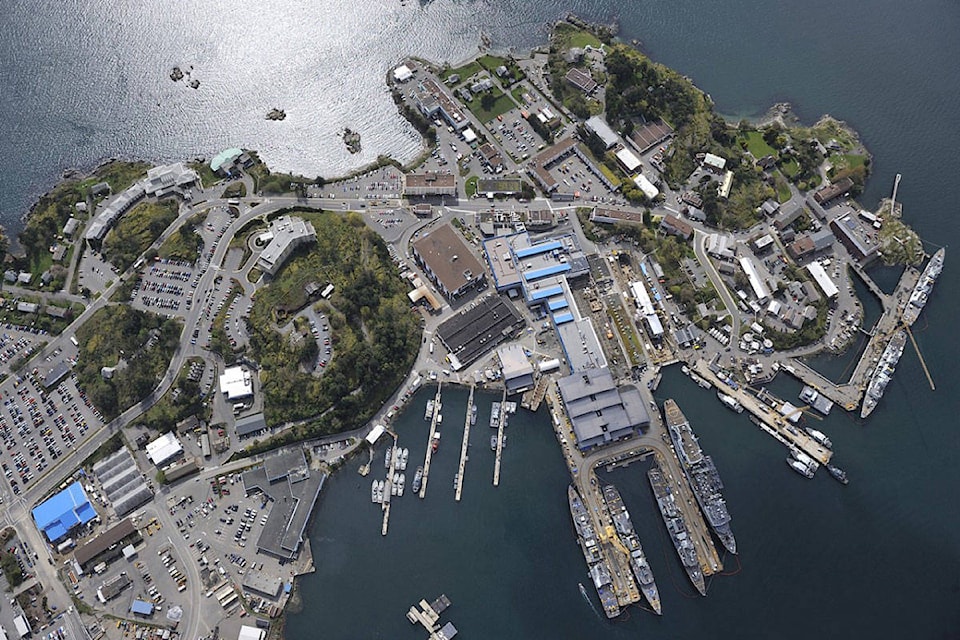As the Royal Canadian Navy (RCN) continues to face record-low recruitment, marine technicians are hoping for change as the trade continues to see some of the highest attrition rates among the navy.
In November, the navy's official Youtube account posted a video where navy commander vice-admiral Angus Topshee spoke about ongoing recruitment and retention issues the navy has faced post-pandemic, and what they are doing in an attempt to up recruitment rates.
Topshee said many trades are seeing shortages of up to 20 per cent, with Naval Communicators seeing an average shortage of 29 percent, and Marine Technicians are seeing shortages of up to 40 per cent for some ranks. He said there is a "simple reason" for the shortage - the Canadian Forces Recruiting Group has not delivered the required intake for the RCN for over a decade.
"While our overall attrition is generally good, a [marine technician] leaves us every two days," he said. "Our west coast fleet is beset with a shortage of qualified techs constraining our ability to maintain and operate our ships and causing us to prioritize our Halifax class [ships] at the expense of our Kingston class."
He also mentioned that the lack of techs to work on the new Harry Dewolfe class Arctic and Offshore Patrol Vessels means they can only sail one at a time right now.
In an attempt to up recruitment numbers, they started the Naval Experience Program in April 2023, which allows recruits to join the navy for one year and try different trades to find the best fit for them before signing a long-term contract. As of March, 160 sailors have been successfully enroled and another 490 have applied and are going through the recruitment process.
They are also offering signing bonuses of up to $20,000 and are allowing permanent residents without Canadian citizenship to join the Canadian Armed Forces.
"We have been clear that the Canadian Armed Forces needs to grow. [The Canadian Armed Forces] is currently looking at how to improve the way in which we recruit and retain people in our forces. That includes looking at expanding eligibility for recruitment, abolishing outdated medical requirements where they are no longer relevant and streamlining the security clearance process," noted a statement from the Department of National Defence.
As of April, the total number of CAF members working at CFB Esquimalt, including members of the air force and army, is just over 3,780, whereas in 2015 around 4,720 CAF members worked at the base.
"The Royal Canadian Navy continues to work towards identifying particular attrition challenges and is developing initiatives to improve retention. In general, over the past 10 years, the attrition rate of the CAF has remained relatively stable, usually in the eight to nine per cent range for the regular and primary reserve forces. Similar patterns have been observed in the Royal Canadian Navy, although the attrition rates are slightly lower than for the CAF overall, usually in the seven to eight per cent range," noted the statement.
In 2017, the marine technician trade was created, combining marine engineers, hull technicians and electrical technicians under one trade, which S1 Nathan Hartley, a marine technician stationed at CFB Esquimalt, says has grown to be an issue as of late and contributes to the retention and recruitment problem within the marine technician trade.
He said when there were three distinct technical trades, sailors could gain qualifications that were transferable to the civilian world should they leave the navy, however, those opportunities have shrunk since the amalgamation. And since the trades combined, there have been little change in pay as their skill sets continue to diversify and their workload continues to grow.
"They give us the entire shift to study and work on and practice and learn and at the end of the day, we're getting the exact same pay, we're getting the exact same opportunities and the exact same monetary rewards as some of the other trades that are just camping around, doing nothing all day," said Hartley. "It's hard to keep a positive outlook on how the navy actually cares for the marine technicians on ship and it definitely plays a role in the retention issue. Is that the only reason? Not at all, but a lot of people don't feel like they're getting heard as marine technicians."
According to the DND, attrition in the marine technician trade has reduced the qualified technicians that can be drawn upon to build technical departments for both Halifax-class and Harry Dewolf-class ships because unique training and qualifications limit the employment of technicians between ships.
Another issue technicians face is when they gain more experience and pass more qualifications, they have less control over where they sail and when they work as their trade becomes more in demand, which can be "strenuous" on family relationships and the life they have built outside of the navy.
Hartley said he hopes to see more qualifications for civilian equivalencies for easier integration to the civilian world, and he hopes for more initiatives catered specifically for the trades that have faced significant recruitment and retention issues.
"It's hard to want to keep on growing in that trade knowing that there's no outright equivalency outside of the military," he said. "Having a little bit more control and having a little bit more direction on where we want to go, a little bit more of a say on what we want to do with our career as a marine technician would go a long way towards, one, boosting the morale, and two, boosting their retention problem."



